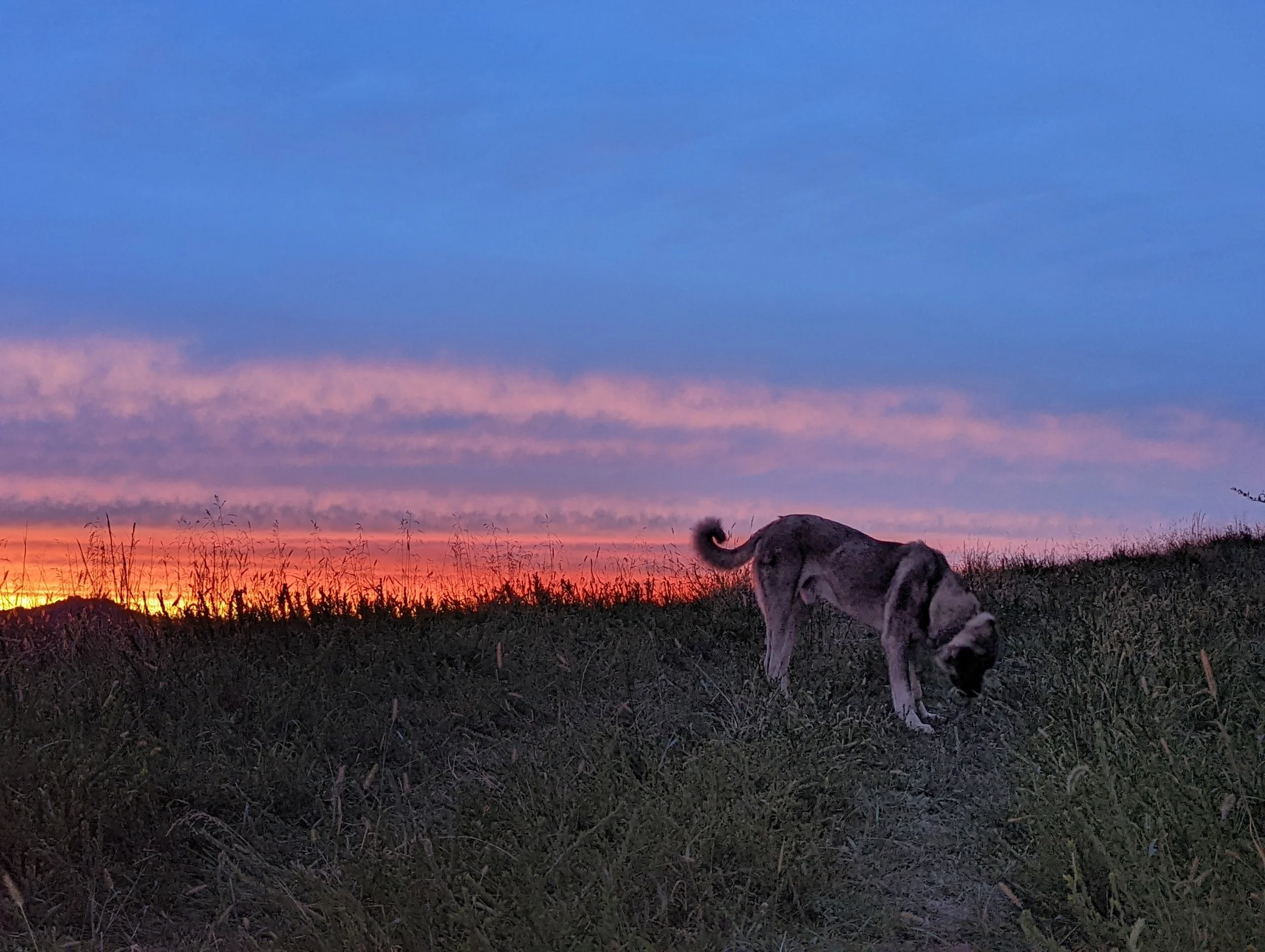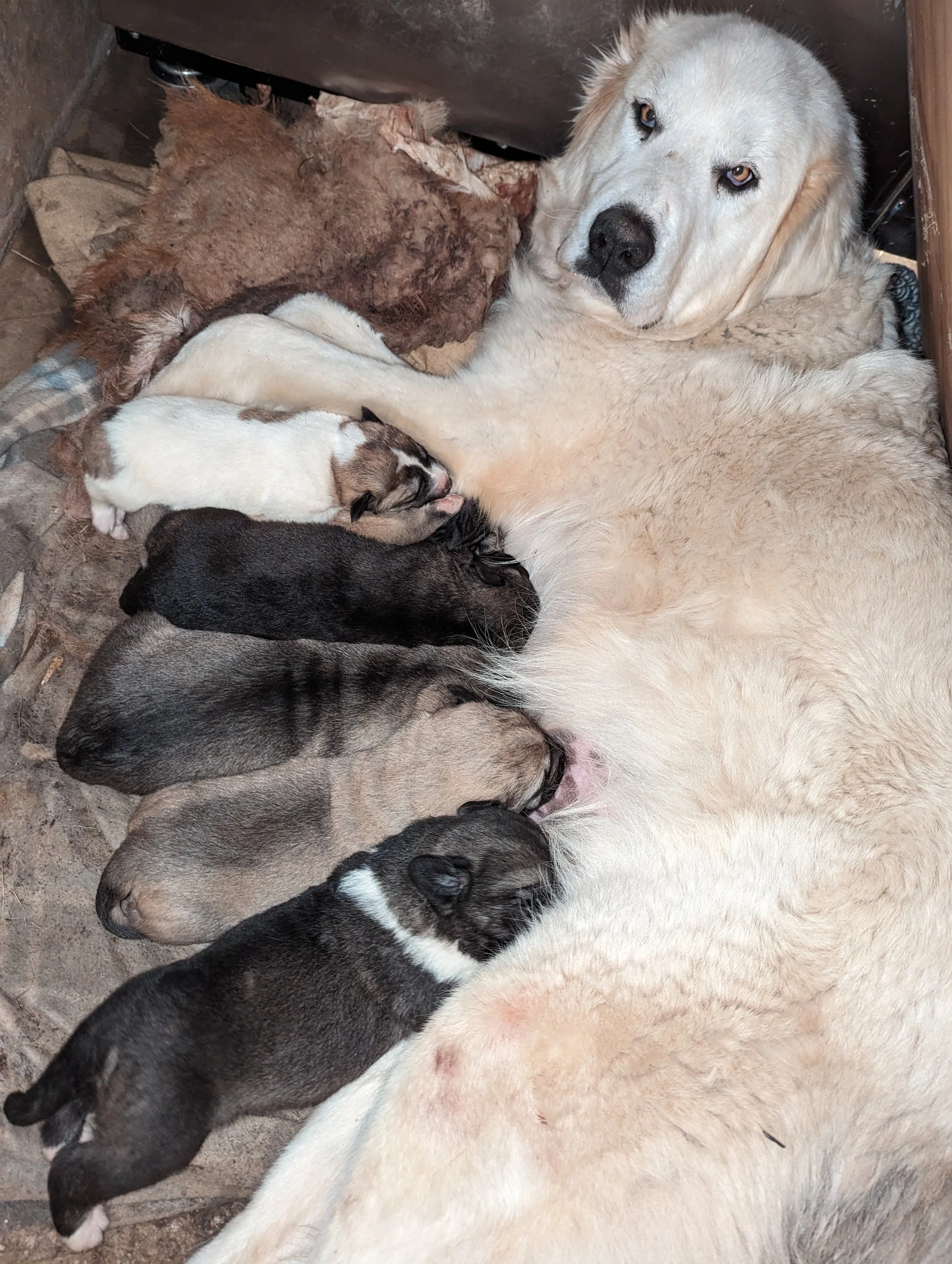
Livestock Guardian Dogs - Absolutely essential to our operation
FAQs
-
LGD (Livestock Guardian Dogs) have been used by shepherds for thousands of years. The importance of having these animals on a grazing operation are often understated by those that have no experience or have had a bad experience with them. Only you can determine if the benefits outweigh the cost of having LGDs. However, with the predator pressure in most parts of the USA it is probably a necessity for most operations. I know that we could not live without our LGDs. And, when you hear a pack of coyotes howling in the middle of the night it sure is nice to have the peace of mind to roll over and go back to bed knowing your LGDs are on duty protecting your flock.
-
We tell people that the best breed is going to vary depending on your needs. It has also been our experience that there is as much variation within breed as across breed. There are certain characteristics or tendencies associated with different breeds, but you can have a very aggressive Maremma or a very timid Kangal.
In general there are larger more powerful breeds suited to larger operations (Kangal, Anatolian, etc) and there are smaller more restrained breeds (Maremma, Karakachan, etc). Again, don’t send me hate mail because you have a Maremma that’s big and tough. But these are general trends.
We find for health reasons that a composite breed dog often works best for us - improved health longer lifespan. This composite should only include LGD breeds.
-
If a dog has teeth it can bite. So, never trust a dog unconditionally. That being said we have never had any serious issue with our LGD. I trust them as much as we would a house dog around people when we are around, and when we have children on the farm the dogs are almost always gentle and caring to them.
Much of the dogs behavior towards strangers will depend on how you raise them. We primarily are concerned with predation and not theft or trespassing, so we try to make sure our dogs are not aggressive to people. Yet, we do want them to alert to strangers and would prefer that they are intimidating enough that strangers don’t feel at ease grabbing a sheep out of our pastures.
If not trained or exposed to people LGDs can certainly be dangerous, and there are countless stories of serious injury from these larger powerful dogs.
-
It really depends on the size of your operation and the terrain that the animals will be traveling, and the predator type and pressure that you have.
We prefer to have at least a pair of dogs working together unless they are in a small field close enough that we can be alerted if there is an attack. A pack of coyotes or stray dogs can and will kill a LGD if they get the chance.
We have 11 dogs currently. This is because, during certain times of the year, we may have several different groups of livestock and have found that coyotes will quickly take advantage of an unprotected group.
-
We like to tell people that it is 90% instinct and 10% training, but if you do not make timely corrections or adjustments that the dog can be 100% ruined.
The most typical issues we see are either that the owners allow or turn the dogs into yard pets that wont stay with the flock or that they allow the puppy to be over playful with lambs leading to ear/tail biting and chasing which can be hard to break and lead to injured or dead animals.
We recommend purchasing a book on how to train LGDs, and are always happy to help people work through any issues. We much rather be brought in the loop early then try to find a new home for a 2 year old dog with engrained bad habits.



